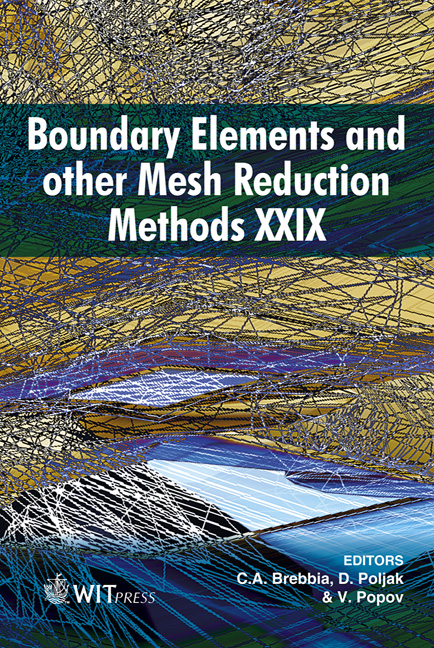Time And Space Derivatives In A BEM Formulation Based On The CQM With Initial Conditions Contribution
Price
Free (open access)
Transaction
Volume
44
Pages
10
Published
2007
Size
622 kb
Paper DOI
10.2495/BE070231
Copyright
WIT Press
Author(s)
A. I. Abreu, M. A. C. Ferro & W. J. Mansur
Abstract
This work is concerned with the numerical computation of time and space derivatives of the time-domain solution of scalar wave propagation problems using the boundary element method (TD-BEM). In the present formulation, the BEM based on the so-called convolution quadrature method (CQM-BEM) is employed. The CQM-BEM takes into account non-homogeneous initial conditions by means of a general procedure, known as the initial condition pseudo-force procedure (ICPF), which replaces the initial conditions by equivalent pseudo-forces. The boundary integral equation with initial conditions contribution is derived analytically and the quadrature weights of the standard ICPF-CQM-BEM formulation are transformed in order to compute time and space derivatives. Two numerical examples are presented at the end of the work illustrating the efficacy of the implemented formulation. Keywords: wave equation, time and space derivatives, boundary element method, convolution quadrature method, initial condition pseudo-force procedure. 1 Introduction This work presents an application of a time-domain boundary element method (TD-BEM) for the analysis of scalar wave propagation problems. The TD-BEM employs the convolution quadrature method (CQM) developed by Lubich [1, 2]. In the CQM, fundamental solutions in the Laplace transformed-domain are considered and a numerical approximation of the basic integral equations of the
Keywords
wave equation, time and space derivatives, boundary element method, convolution quadrature method, initial condition pseudo-force procedure.





